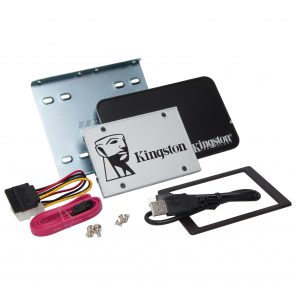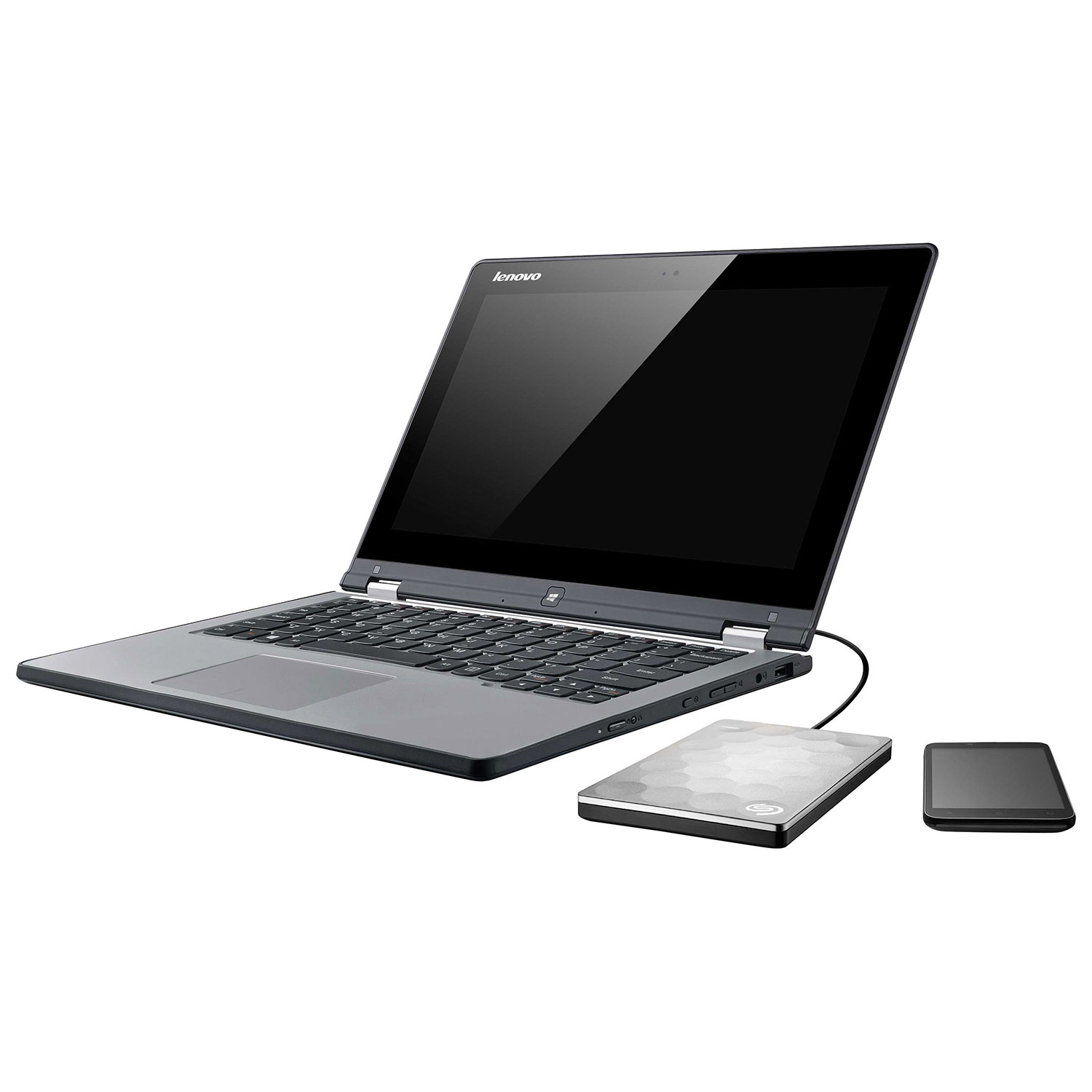 Generally overlooked, hard drives have never been the coolest computer peripherals, but with faster and more capacious Solid State Drives now available as direct replacements or as external backup storage, they’re not only desirable tech gifts, they can completely change the way we work and play.
Generally overlooked, hard drives have never been the coolest computer peripherals, but with faster and more capacious Solid State Drives now available as direct replacements or as external backup storage, they’re not only desirable tech gifts, they can completely change the way we work and play.
Storage solutions have been with us since the advent of the computer. Floppy drives have long given way to larger capacity spinning hard drives which have been the standard for desktops and notebooks for a long time now. The biggest breakthrough has been Solid State Drives or SSDs. These aren’t spinning hard drives and can access, read and write data at much faster rates with little or no wear and tear.
Why an SSD?
 Hard Disk Drives or HDDs are based on an older spinning disk design. They have more mechanical parts and through the years have been able to get faster by making the drives spin faster. A typical HDD takes around 5,000 to 10,000 micro seconds to access data.
Hard Disk Drives or HDDs are based on an older spinning disk design. They have more mechanical parts and through the years have been able to get faster by making the drives spin faster. A typical HDD takes around 5,000 to 10,000 micro seconds to access data.
SSDs have fewer moving parts, they have access speeds ranging from 35 to 100 micro-seconds. This is around the ballpark of 100 times faster than antiquated HDDs. Generally, if you are price conscious or you need a lot of storage space, an HDD will be ideal. If speed is the primary goal, they look for an SSD.
SSDs are also more power efficient and use less energy to run. This is an advantage for notebooks and tablets (longer battery life) and means a lower energy bill over time. SSDs are also quieter and don’t generate the amount of noise and heat as some HDDs which are notorious for contributing to system heat and firing up a PC’s fans so air can be cooled.
SSDs haven’t only gotten faster (newer technologies are offering up to 3 gigabytes per second transfer speeds, which is insanely fast), these new SSDs are also coming in smaller packages. In fact, the SSD drives on the latest notebooks and 2-in-1 don’t even look like our idea of a rectangular disk drive. They look a lot more like flat RAM wafers but have just as much storage—or even more—than larger, heavier drives.
People are often stuck with the amount of storage they bought on their device. With notebooks and tablets becoming increasingly impossible to upgrade, giving an external SSD hard drive can make someone’s holiday.
With an SSD, you can quickly add thousands of tracks of your favourite music, movies and TV shows as well as quickly transfer large files for bringing along. Let’s check the benefits.
Internal SSDs

Replacing an ageing internal hard drive on a desktop or notebook is one of the single biggest upgrades you can consider.
Giving someone a new SSD to install on an old computer guarantees various gains in speed, performance and storage space. It literally makes old hardware feel new again.
I’ve upgraded 5-year old PCs by adding more RAM as well as a new SSD (at least to run the OS or as a boot drive) and was amazed to see 40%-70% speed increase right out of the gate.
For PCs that allow for multiple internal drives, this means that you can keep the older original drives as storage while running the OS on the faster SSD. Increase in performance and overall use, including better battery life, can be dramatic.
Installing SSDs on PCs and especially notebooks are not for the faint hearted and can damage your PC and your valuable date (especially considering you do need to clone your OS and important files on to the new SSD). I suggest getting professionals, like Best Buy’s Geek Squad to make the upgrade for you.
External SSDs

External SSDs which come as USB 2.0 or, even faster, USB 3.0 devices, are way easier to integrate into an existing workflow. These are plug-and-play devices which are ideal for quick backups, sharing massive files as well as being used as scratch disks for video editing, image editing, photography and even animation or motion graphics.
External SSD’s come in various sizes, styles and capacities. The good thing is that there are now options for every use case or price range. I use an external SSD as a backup drive for my desktop. This is plugged in always and automatically saves files, documents and ongoing work.
I also have a smaller external SSD that I use as backup for my Surface Book or MacBook when travelling. This provides a place for me to store videos or photos that I shot with my camera or smartphone. Using an external SSD for rendering or compiling speeds up the process of content creation and is ideal compared to having to use the native drive to control and write to. This also serves as a backup for my work while on the road and is a critical tool. Should my computer or its hard drive fail for any reason, at least most of my work is saved and I can easily continue working on another machine with minimal fuss.
SSDs, a gift buyer’s guide
 There are a variety of SSDs worth considering and ideal for various types of users. Gamers who have consoles like the new PS4 can easily benefit from an SSD speed boost which will make game access faster as well as allow for more games to be stored.
There are a variety of SSDs worth considering and ideal for various types of users. Gamers who have consoles like the new PS4 can easily benefit from an SSD speed boost which will make game access faster as well as allow for more games to be stored.
For general users, a desk-mounted SSD to serve as a backup drive or place to store important information is also a good consideration. Some of these SSDs even offer cloud storage for additional security and a third backup option.
Looking at the needs of students, mobile workers and road warriors, the most compact and fastest SSD options are the norm. These users may not need the largest capacity drives but they will certainly benefit from SSDs that mirror their capacity of their notebooks or tablets.
Video editors or photographers will need a rugged SSD to take with them on location as well as carry all the projects they are working on.



